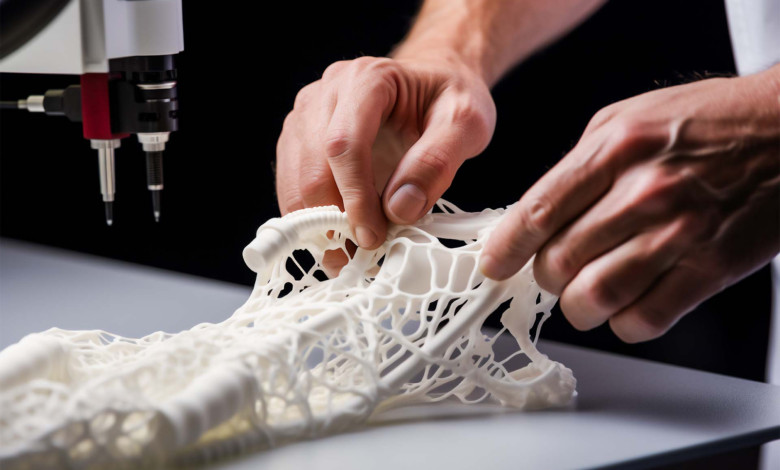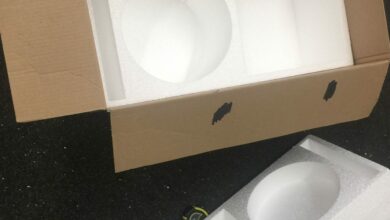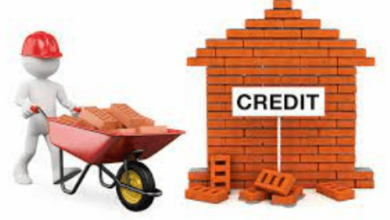3 Manufacturing Techniques for Complex Rapid Prototyping You Should Know

In the dynamic landscape of product development, the ability to swiftly iterate and refine ideas is paramount. Enter rapid prototyping, a game-changing approach that revolutionizes traditional product development. Imagine having the power to transform digital designs into physical prototypes with unprecedented speed and precision. Rapid prototyping offers a gateway to innovation where ideas can be tested, refined, and validated with remarkable agility.
Traditional prototyping methods often entail lengthy lead times and substantial costs, posing significant barriers to innovation. However, rapid prototyping transcends these limitations, harnessing cutting-edge manufacturing techniques to streamline the journey from concept to reality. In this article, we’ll embark on a quest to explore three pivotal manufacturing techniques—CNC machining, metal casting, and 3D printing—that serve as pillars in the realm of rapid prototyping. Join us as we delve into the intricacies of each technique and unravel the secrets to achieving complex prototypes with ease.
Rapid prototyping isn’t merely about speed; it’s about empowering innovators to push the boundaries of what’s possible. By embracing advanced manufacturing technologies and techniques, designers and engineers can unleash their creativity and bring bold ideas to life like never before. Now, let’s embark on this enlightening journey through the world of rapid prototyping and discover the tools and techniques shaping the future of product development.
What is Rapid Prototyping?
Rapid prototyping is a beacon of innovation in product development, offering a swift and efficient path from concept to prototype. Unlike traditional prototyping methods, which often involve lengthy lead times and costly tooling processes, rapid prototyping leverages advanced manufacturing technologies to expedite the creation of physical prototypes from digital designs. This accelerated approach enables designers and engineers to iterate quickly, test functionalities, and refine designs easily, ultimately accelerating product development and fostering innovation.
At its core, rapid prototyping is about agility and adaptability—qualities that are essential in today’s fast-paced business environment. Whether creating functional prototypes for user testing or producing high-fidelity models for investor presentations, rapid prototyping offers a versatile and cost-effective solution to product development challenges.
Now, let’s discuss three of the most influential manufacturing techniques in rapid prototyping: CNC machining, metal casting, and 3D printing. Each technique brings unique strengths, empowering designers and engineers to tackle complex prototyping challenges confidently and creatively.
CNC Machining.
CNC (Computer Numerical Control) machining is a cornerstone in rapid prototyping, offering unparalleled precision and versatility. This subtractive manufacturing technique utilizes computer-controlled machines to remove material from a workpiece, translating digital designs into physical prototypes with exceptional accuracy. With CNC machining, designers can bring even the most intricate concepts to life, easily achieving complex geometries and tight tolerances.
5 Axis CNC Milling
Among the various iterations of CNC machining, 5-axis CNC milling reigns supreme in tackling complex prototyping challenges. Unlike traditional 3-axis machining, which limits tool movement along three primary axes, 5-axis CNC milling machines offer enhanced capabilities by simultaneously manipulating the cutting tool along five axes. This multidimensional approach enables manufacturers to machine intricate features and challenging geometries from multiple angles, unlocking new possibilities in rapid prototyping. The flexibility of 5-axis CNC milling significantly reduces the need for multiple setups and fixturing, leading to faster production times and higher precision in the final prototype.
In addition, 5-axis CNC milling is particularly advantageous for creating complex parts that require machining from different orientations. This capability is essential in aerospace, automotive, and medical devices, where prototypes often involve intricate designs and tight tolerances. By utilizing 5-axis CNC milling, manufacturers can achieve superior surface finishes and dimensional accuracy, ensuring that prototypes meet the highest quality and performance standards.
3+2 Axis CNC Milling
In CNC machining, the 3+2 axis milling technique strikes a delicate balance between precision and efficiency. This hybrid approach combines the simplicity of 3-axis machining with the flexibility of additional axes for repositioning the workpiece or cutting tool as needed. By leveraging this versatile technique, manufacturers can produce prototypes with complex geometries and intricate details in a fraction of the time, accelerating the product development cycle while maintaining superior quality standards.
The 3+2-axis milling process allows for greater accessibility to the workpiece, creating features that would be difficult or impossible to achieve with standard 3-axis machining. This technique is particularly useful for parts with angled surfaces, deep cavities, or intricate internal features. By incorporating the additional axes, manufacturers can achieve more accurate and consistent results, reducing the need for manual adjustments and rework.
Moreover, 3+2 axis CNC milling enhances the overall efficiency of the prototyping process by minimizing setup times and optimizing tool paths. This reduces production costs and shorter lead times, allowing designers and engineers to iterate and refine their prototypes more rapidly. As a result, the 3+2 axis milling technique plays a crucial role in enabling fast and efficient rapid prototyping, ensuring that innovative ideas can be brought to market swiftly and effectively.
Metal Casting.
Metal casting is a time-honored manufacturing technique offering a cost-effective solution for producing complex prototypes. This versatile process involves pouring molten metal into a mold cavity, where it solidifies to form the desired shape. Metal casting boasts the flexibility to create prototypes with intricate details and complex geometries, making it an invaluable tool in the rapid prototyping arsenal.
Die Casting
Die casting emerges as a powerhouse in metal casting, offering high-speed production of prototypes with exceptional dimensional accuracy and surface finish. This high-pressure casting process utilizes reusable molds, known as dies, to produce large volumes of parts with remarkable efficiency. Die casting is particularly well-suited for rapid prototyping of metal components in automotive, aerospace, and consumer electronics industries, where speed and precision are paramount.
The die-casting process involves injecting molten metal into a steel mold under high pressure, resulting in strong and precise parts. Using reusable molds allows for producing multiple identical parts, making die casting an ideal choice for prototyping large quantities of components. Additionally, die casting can produce parts with thin walls and complex geometries, reducing material usage and overall production costs.
In rapid prototyping, die casting enables designers to iterate and refine their designs quickly, ensuring that the final product meets all necessary specifications. The ability to produce high-quality prototypes with tight tolerances and excellent surface finishes makes die casting a valuable tool for accelerating product development.
Sand Casting
With its rich history and adaptability, sand casting remains a cornerstone in metal casting. This time-tested technique involves pressing a pattern of the desired part into a sand mold, which is then filled with molten metal to create the final casting. Sand casting offers unparalleled flexibility, allowing manufacturers to produce prototypes of varying sizes and complexities easily. From intricate components to large-scale prototypes, sand casting provides a versatile and cost-effective solution for rapid prototyping needs.
One of the key advantages of sand casting is its ability to accommodate a wide range of metals and alloys, making it suitable for various applications. The process is highly adaptable, allowing for creating prototypes with complex shapes and intricate details. Additionally, sand casting is a relatively low-cost method, making it an attractive option for producing prototypes in the early stages of product development.
Sand casting also allows for rapid modifications to the mold, enabling designers to iterate and refine their prototypes quickly. This flexibility is particularly valuable in the rapid prototyping process, where the ability to make quick adjustments and improvements is essential. By leveraging the capabilities of sand casting, manufacturers can produce high-quality prototypes that accurately represent the final product, ensuring a smooth transition from concept to production.
3D Printing.
3D printing, also known as additive manufacturing, emerges as a transformative force in rapid prototyping. This groundbreaking technology builds parts layer by layer from digital designs, offering unparalleled design freedom and customization capabilities. 3D printing enables designers and engineers to create prototypes with intricate internal structures and complex geometries previously impossible to achieve with traditional manufacturing methods.
Stereolithography (SLA)
Stereolithography (SLA) stands at the forefront of 3D printing technologies, offering rapid prototyping of highly detailed parts with smooth surface finishes. In SLA, a laser selectively cures liquid resin into thin layers, building the final part layer by layer. This precise and efficient process is ideal for producing prototypes with intricate geometries and fine details, making it a popular choice across healthcare, aerospace, and consumer electronics industries.
The SLA process begins with a vat of liquid photopolymer resin cured by a UV laser to form solid layers. Each layer is carefully built upon the previous one, resulting in a highly detailed and accurate prototype. The ability to produce parts with delicate features and smooth surfaces makes SLA an ideal choice for applications that require high precision and aesthetic quality.
SLA offers various material options, including resins with varying mechanical properties and colors. This versatility allows designers to create prototypes that closely mimic the final product’s appearance and functionality. By leveraging SLA’s capabilities, manufacturers can produce high-quality prototypes that are both visually appealing and functionally robust.
Selective Laser Sintering (SLS)
The SLS process begins with a bed of powdered material selectively fused by a laser to form solid layers. After each layer is fused, the powder bed is lowered, and a new layer of powder is spread over the previous one. This layer-by-layer approach allows for creating of complex geometries and internal structures that are difficult or impossible to achieve with traditional manufacturing methods. SLS is advantageous for producing functional prototypes that withstand mechanical stress or high temperatures.
Read Also: The Important Qualities a Truck Accident Lawyer Must Have
One of SLS’s key benefits is its ability to produce parts with excellent mechanical properties and durability. The process is compatible with various materials, including engineering-grade thermoplastics and metals, making it suitable for multiple applications. Additionally, SLS does not require support structures, simplifying the design process and reducing post-processing efforts. This makes SLS an efficient and versatile choice for rapid prototyping, enabling designers to iterate and refine their designs quickly.
Conclusion
In conclusion, rapid prototyping is a beacon of innovation, offering designers and engineers a swift and efficient path to bringing their ideas to life. By leveraging advanced manufacturing techniques such as CNC machining, metal casting, and 3D printing, innovators can accelerate the product development cycle, reduce time to market, and ultimately deliver superior-quality prototypes with unparalleled precision and efficiency.
As technology continues to evolve and new techniques emerge, the future of rapid prototyping holds endless possibilities for creativity, ingenuity, and innovation.





